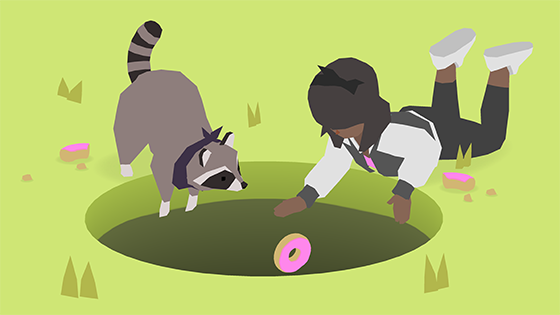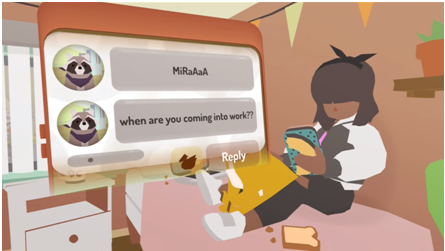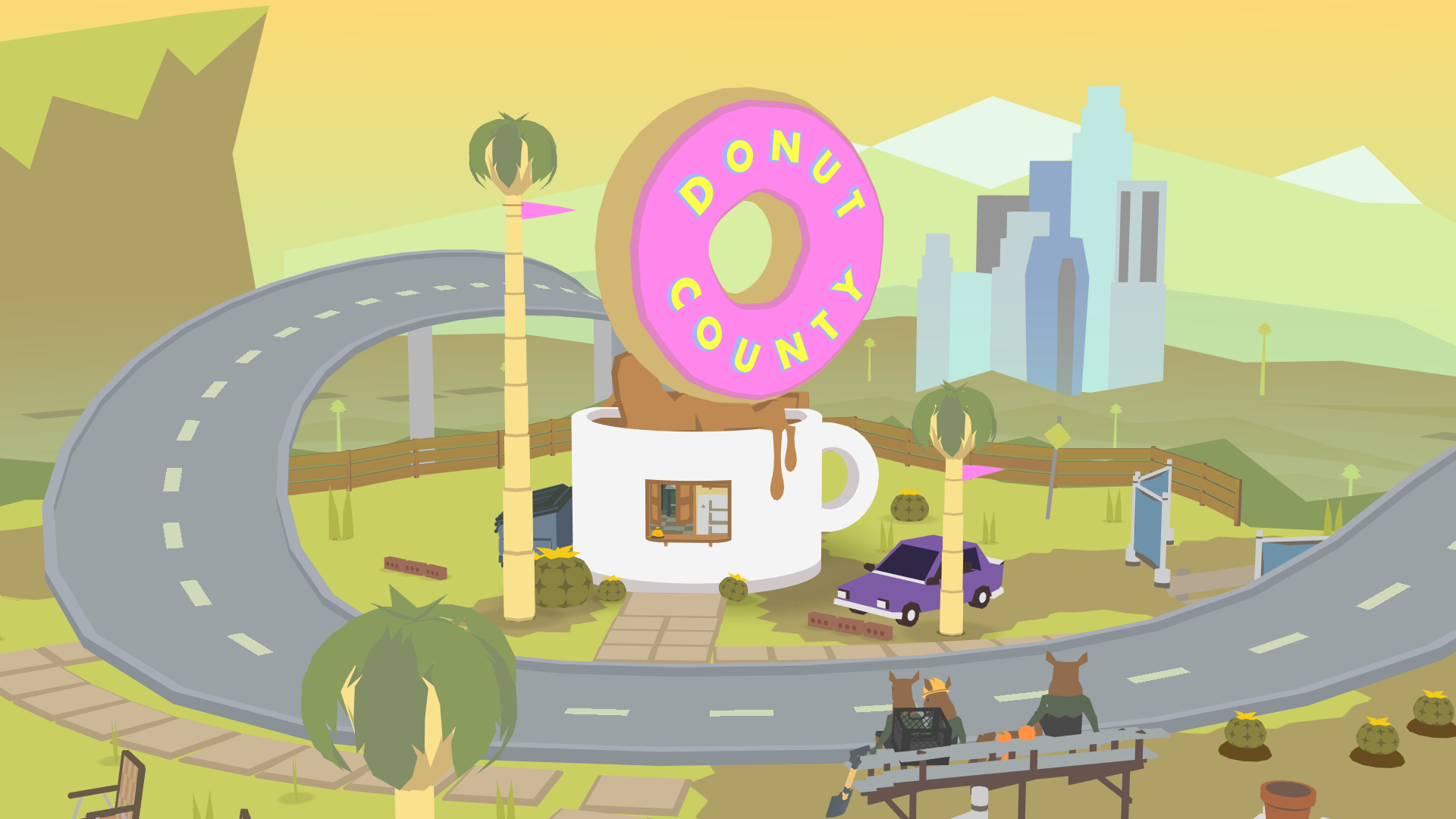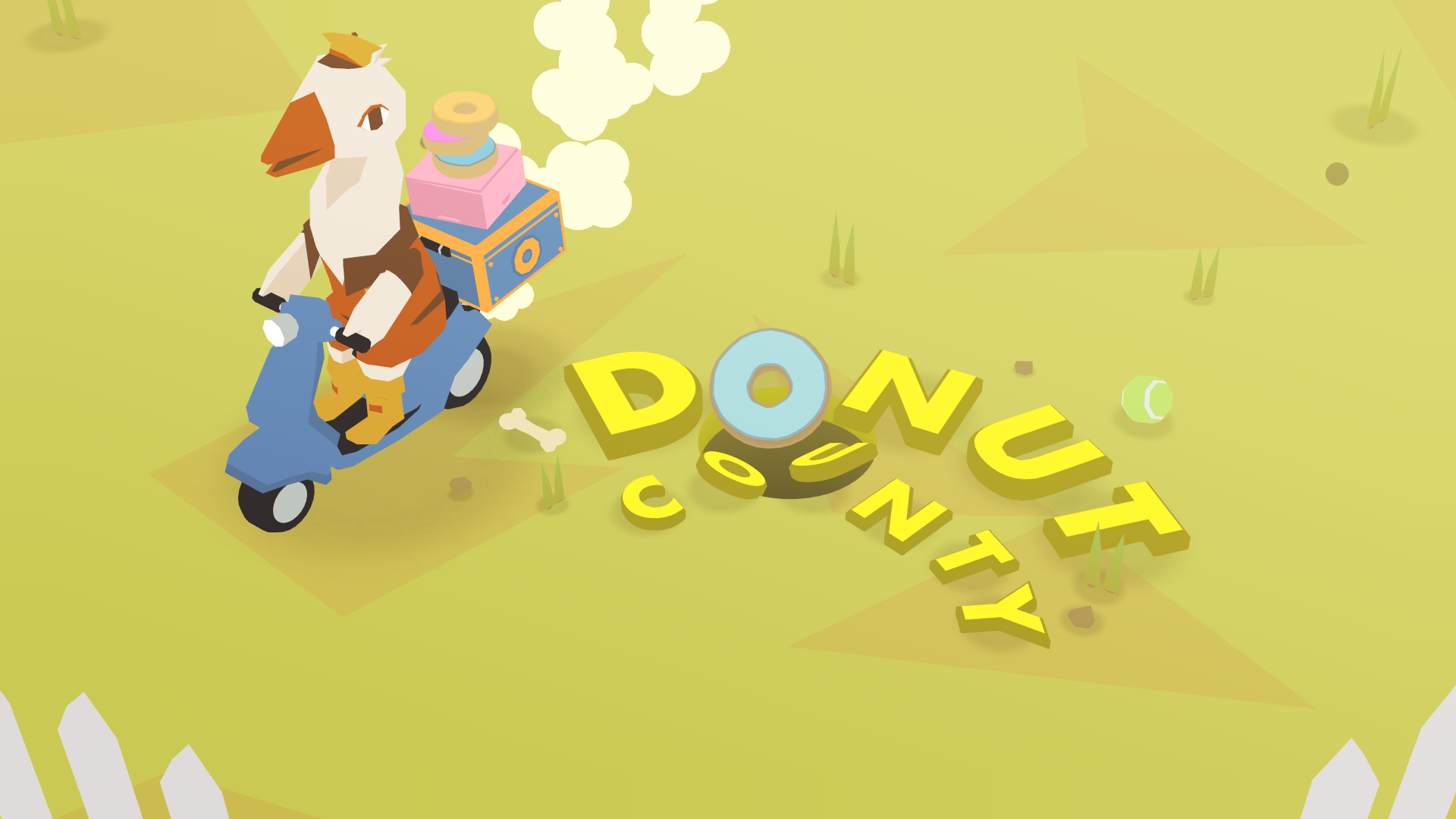A six-year labor of love, the tale of Donut County is one assuredly inspirational to many in the games industry and beyond. It’s one of a talented individual putting in endless hours and copious effort to create something magical. Given said magic game includes talking raccoons and destroying cities? It’s sure to be a crowd pleaser.
That unholy lovechild of Animal Crossing and Night in The Woods was released on August 28th, and – as countless people are no doubt finding out – it’s just as promising as the previews suggested.
Let’s take a look at what makes it so special — and well worth your time.
Style
Right off the bat, the most instantly recognizable thing about Donut County is the charm. A game about an all-consuming hole in the ground could have easily turned gimmicky, and yet through the careful creation of the world you interact with (and destroy), it becomes so much more.
For those who owned a Wii from 2007 onward, the whole game has an element of Zack and Wiki to it — that is, a vibrant and interesting story and environment, backed up by solid writing and clever puzzles.
Puzzle games often suffer from their tone, as an overly serious or silly tone can put a damper on playing the actual game itself. This is the side benefit of the playful nature of the game, as it stays on a whimsical track that never feels like it’s taking itself too seriously. The friendship between the ‘hero’ BK and his BFF Mila is particularly wonderful, both in their entertaining conversations and capturing the essence of how close friends interact.
Combine that with the satisfying ‘collect-’em-all’ mechanic of games like Katamari Damacy, and you have an unusual, yet incredibly interesting treat on your hands.
Gameplay 
There’s something oddly calming about destroying environments piece by piece. While Donut County may not be a very difficult game, there’s still enough challenge that you feel accomplished after finishing a level – along with the satisfaction of seeing the once cluttered landscape peacefully empty.
Bringing havoc to the various levels and landscapes really give you a feel of the game’s universe and atmosphere – even though your main objective is to absorb said universe into the gaping void. The black-hole mechanics are quite clever too, gaining different abilities based on the things you collect. While some of these abilities are only temporary – based on the things around you on each level – finding new ways to affect your surroundings through fire, light and rabbit powers always make you feel at least a little bit clever. There are also permanent upgrades at plot-relevant parts of the story, allowing for both a sense of progression and different ways to use the hole, like being able to launch stuff out of it.
The limited use of upgrades and powers is a great choice, as they don’t undermine the fun of using the black hole itself. Although somewhat ‘bouncy’, the physics of the game are incredibly well made, with each item having a certain sense of weight to it. As you start each level as a hole too small to get some of the items, you quickly learn how to use the physics of the game to your advantage – as some items will only fit if you absorb their smaller part first. It’s a simple basis for a game, yet pulled off effectively enough to be endlessly entertaining.
One of the most interesting things about Donut County is its ability to add mechanics that would normally clash with a puzzle game, without them ever seeming out of place. Having a boss fight, for example, is normally the kryptonite of the puzzle genre, as the things you want from a boss fight and the things you want from a puzzle game are usually complete opposites. However, the game manages to pull off a three-phase boss fight with relative ease, despite it being fairly different from the rest of the game.
In short, every part of Donut County’s gameplay fits into it as perfectly as placing some garbage into a gaping black void — or a house into a void. Or a town — you get the point.
Plot
Gameplay aside, the bread and butter of the game is its story. Not only does Donut County immediately reel you in by making you ask how the plot is taking place, but it keeps you planted in that interest through its characters. Adorable character design aside, the relaxed and funny dialogue adds a hilarious element to the game that makes it feel all the more relatable and human – or, as human as a talking raccoon can be considered, anyhow.
That said, the game doesn’t focus solely on our morally questionable protagonist, as time is taken to introduce you to the whole colorful cast of characters – each with their own personalized level. In a game that could have easily had minimal character interaction, it’s the icing on the cake (or doughnut) to also get a look into each character’s life and personality. It’s also a pretty smart way to make the levels feel different – as what the character does and is like has a fairly solid impact on the level itself.
Criticism
The only real criticism of Donut County is that there’s not enough of it – with its current game time spanning two or so hours, depending on how quickly you blaze through the story of friendship, raccoon politics, and donuts. While it’s always better to have a short, purposeful game than a long, less impactful one, you can’t help but finish Donut County feeling like you could have played twice the game and not gotten bored.
That said, the plot is carried out in a way that feels engaging and not drawn out – something a longer play time likely would have jeopardized.

…Fun?
For those puzzle fanatics hoping that Donut County would fulfill their need for some fiendishly difficult puzzles, the game may fall short of expectations. This isn’t to call Donut County a failure, though – not wanting to be ‘the Dark Souls of puzzle games is pretty respectable in a time where making such a game could get you instant fame.
For folks wanting a quirky, lovable game that’s main focus is on the simple joy of having fun solving puzzles, Donut County is as sweet a treat as the name suggests — and you don’t have to worry about having a gluten allergy.








Published: Aug 28, 2018 12:19 pm